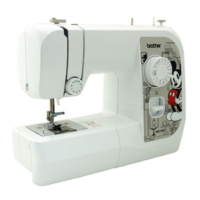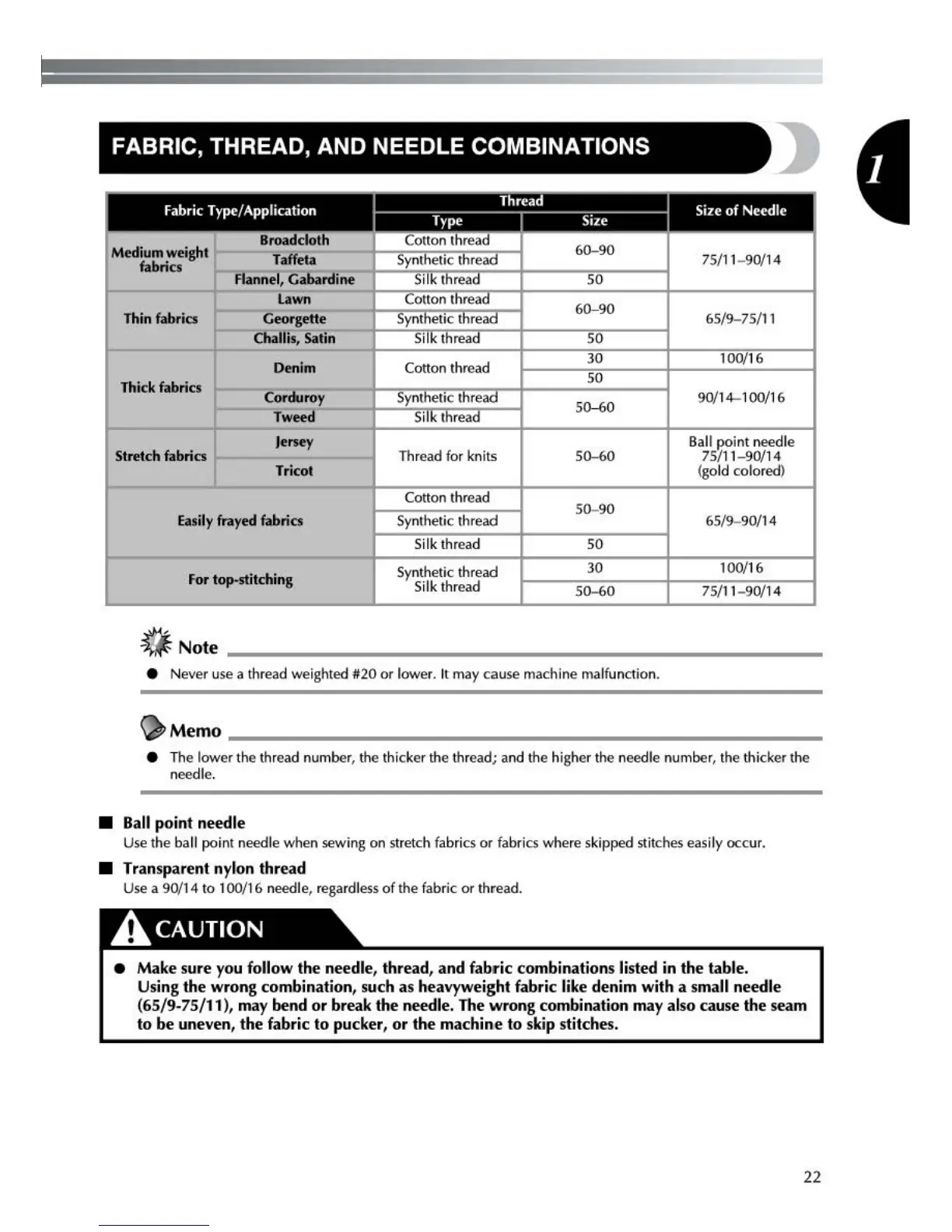FABRIC, THREAD, AND NEEDLE COMBINATIONS
Type Size
Size
of
Needle Fabric Type/Application
Thread
Broadclo
th
Cotton thread
60-90
Medium weight
Taffeta 75/11-
90/
14
fabrics
Flannel, Gabardine
so
75/11-
90/
14
-
Lawn
60-90
Thin fabrics Gecwgette
65/9-75/
11
-
65/9-75/
11
Challis, Satin
50
-
Denim Cotton thread
30
100/16
Thick fabrics
50
Corduroy
5~0
90/14-
1
00/
1 6
Tweed
Stretch fabrics
J
ersey
Thr
ead
for knits
5~0
Ball
point needle
75/
1
1-90/
14
Tricot
(gold
co
lored)
Cotton thread
Easily frayed fabri
cs
Synthetic thread
50
-
90
65/9-
90/
14
S
il
k thread
50
Synthetic thread
30
100/16
fot' top-stitching
S
il
k thr
ead
50-60
7
5/
11-
90/
1 4
~
Note
•
Never use a thread
we
ighted
#20
or
lower.
It
may
cause
machi
ne
malf
unct
i
on
.
~
i\iemo
~~~~~~~~~~~~~~~~~~~~~~~~~~~~~~
e T
he
lower the thr
ead
number,
the
thicker the thread; and
the
higher the needle number, the
th
icker
the
needle.
•
Ball
point needle
Use
the
ball point needle when sewing
on
stret
ch
fabrics
or
fabrics where ski
pp
ed
stitches eas
il
y occur.
• Transparent nylon thread
Use a
90/
14 to 1
00/
16 needle, regardless of
the
fabric or thread.
AcAu110N
• Make sure you follow the needle, thread, and fab:ric combinations listed
in
the table.
Using
the wrong combination, such as heavyweight fabric like denim with a small needle
(65/9-75/
11
), may bend
or
break the needle. The wrong combination may
al
so cause the seam
to
be uneven, the fabric
to
pucker,
or
the machin.e
to
s
kip
stitches.
22

